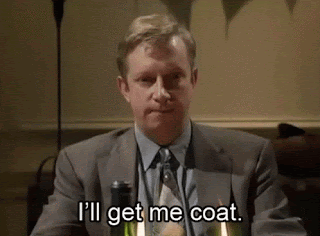Film:
Touch of Evil (Orson Welles, 1958)
I Start Counting (David Greene, 1969)*
The Devil's Nightmare (Jean Brismée, 1971)*
Malpertuis (Harry Kümel, 1971)*
Wake in Fright (Ted Kotcheff, 1971)
French Connection II (John Frankenheimer, 1975)
Draguse or the Infernal Mansion (Patrice Rhomm, 1976)*
Le bijou d'amour (Patrice Rhomm, 1978)*
Dracula Sucks (Philip Marshak, 1978)*
Deadly Games (Scott Mansfield, 1982)*
Corruption (Roger Watkins as Richard Mahler, 1983)*
After Hours (Martin Scorsese, 1985)
The Believers (John Schlesinger, 1987)
Tales From the Hood (Rusty Cundieff, 1995)
Shadow of the Vampire (E. Elias Merhige, 2000)
Trouble Every Day (Claire Denis, 2001)*
Drag Me To Hell (Sam Raimi, 2009)
Hell Hath No Fury (Jesse V. Johnson, 2021)*
Madam Claude (Sylvie Verheyde, 2021)*
Midnight (Kwon Oh-seung, 2021)*
Spider-Man: No Way Home (Tom Watts, 2021)*
All My Friends Hate Me (Andrew Gaynord, 2022)*
The Seed (Sam Walker, 2022)*
Fresh (Mimi Cave, 2022)*
Studio 666 (B.J. McDonnell, 2022)*
Television:
Mastermind - Episodes 25-29 (Bill Wright, 2021/2022)*
Peaky Blinders - Episodes 1-5; Season 6 (Steven Knight, 2022)*
* First time viewings.
Dada Debaser Notes:
- Found Fresh to be a completely derivative and tonally incosistent horror comedy. Could have been great if this was helmed by someone more capable. Solely focused on subversion for the sake of it.
- Surreal seeing Reggie Nalder (albeit credited under a pseudonym) in Dracula Sucks with recognisable golden era pornstars. Turns out some of them have some real acting chops. Not surprised Brian De Palma initially cast Annette Haven for his film, Body Double (1984), before having to give the part to Melanie Griffith.
- Did not expect to hear a rip-off version of Morricone's theme to The Thing in a vintage pornographic film like Roger Watkins' Corruption.
- Think I've mined every worthwhile slasher from the golden era, as all I've found have been duds like Deadly Games ever since. Still hoping in vain for some long lost classic to be unearthed.
- Best thing about Foo Fighters' splatter comedy, Studio 666, was John Carpenter's opening theme and the Lionel Richie cameo.
- Embarrasingly watched the wrong Madame Claude film (meant to watch Just Jaeckin's version). This recent version makes the same mistakes many biopics and period dramas have been making all too often, as they're heavily reliant on the hair, make-up and wardrobe department - f**k everything else! Tired of directors shoving their entire Spotify playlist in their movies, too.
- Wasn't won over by Spider-Man: No Way Home, but then again I'm not a zoomer who gets giddy over a meme reference shoved in a movie. Did enjoy seeing Willem Dafoe again and those cool end credits, though.
- Woeful as it was, The Seed gets a point for fooling me into thinking it was an American film. All three actresses fared better with their fake American accents than Ewan McGregor ever did.
- Can't believe both of my favourites from this season of Mastermind got knocked out in the very same episode. Farewell, Paul Risebury-Crisp 🤓 and Patrick Wilson!
- Already have a one and done dedicated post about The Oscars this month, but it was hard to escape from the big shock this year:

















